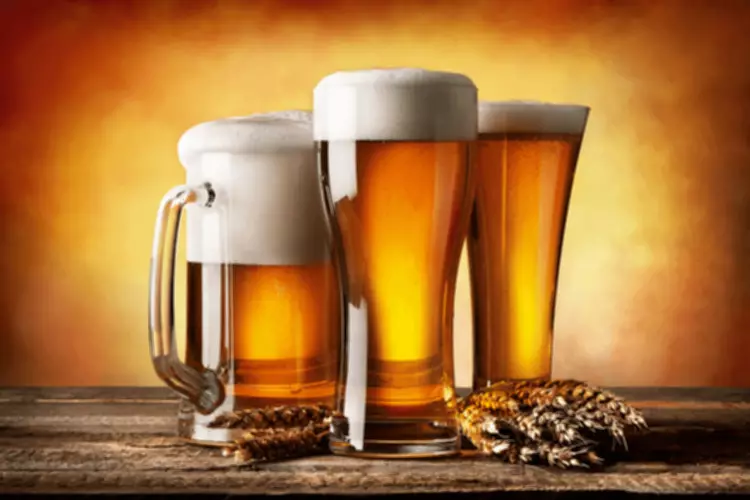
Our brain is a remarkable organ that can change and adapt throughout our lives. This ability is called neuroplasticity, and it helps us learn new skills, heal from injuries, and deal with new situations. One of the most important factors that affects neuroplasticity is nutrition.

Alcohol Addiction and the Need for Detoxification
However, the best diet for alcohol detox is one that’s tailor-fit according to your needs by a professional. For people experiencing alcohol withdrawal symptoms, eating can prove difficult. But nourishment is important once a physician deems an individual stable enough to eat. Well-balanced, calorie-appropriate meals can help detox patients improve nutrient deficiencies, manage low blood sugar and improve and maintain their body weight. It’s important for every person to develop healthy eating habits, but it’s crucial for people who are recovering from a drug or alcohol addiction.
- As you’ve likely heard, heavy alcohol consumption can be damaging to your brain.
- Join us at Acqua Recovery, where healing goes beyond traditional methods, and the journey to sobriety is embraced with care and understanding.
- A deficiency of vitamin B1 (thiamine) can be especially harmful, leading to irreversible brain damage if not addressed.
- Salmon, which has already appeared on our list once, is also extremely high in omega-3s.
- Early in recovery, your body will need to readjust to the feeling of hunger.
- When you cut out alcohol, your gut works to regain its natural balance, which can improve digestion, absorption of nutrients, and serotonin production.
Addiction Programs
Early in recovery, your body will need to readjust to the feeling of hunger. That’s why it’s important to eat three meals a day plus snacks as your body heals. Alcohol withdrawal can begin within hours of ending a drinking session.
Nutritional Strategies for Liver Repair in Alcohol Recovery
At The Recovery Village Columbus, we care about helping you feel your best during recovery, ultimately succeeding in your recovery journey. Contact a Recovery Advocate today to learn how we can help you achieve lasting freedom from alcohol addiction. The sooner you canwork with your doctor to create your recovery diet and commit to it, thebetter. You’ll have a lot to work on, so getting your healthy diet establishedearly on can help you focus on the bigger parts of your recovery. Before committing to eating certain foods to heal yourbody, you should set realistic expectations. There may be times that you feelcompelled to eat certain foods or a certain volume of food.
Recovery Nutrition Overall
- Vitamin D is another vitamin that’s usually deficient in people with AUD.
- Eat plenty of fruits and vegetables, including citrus fruits, strawberries, bell peppers, tomatoes, and cruciferous vegetables, and consider taking a vitamin C supplement.
- This is usually due to neurotransmitter imbalances, fluctuations in blood sugar content or just having an addictive personality.
- Alcoholics are commonly deficient in vitamin B6, thiamine, and folic acid; however, they still can gain weight because of the empty calories in alcohol.
- Managing appetite changes by eating smaller, more frequent meals and being mindful while eating, such as avoiding distractions and chewing food well, are also key practices.
A positive mood is also affected by proper nutrition because it can positively affect an individual’s outlook on life–lessening the risk of relapse in some cases. Certain foods are good for everyone when they are recovering from alcohol detox. The food should help you get back to a healthy balance, and it should start at the best diet for recovering alcoholic beginning of recovery. Recovering alcoholics can seek dietary support by regularly consulting with a nutritionist for personalized advice. Joining support groups focused on recovery and staying informed about nutrition and recovery through reliable sources are also effective ways to maintain a healthy diet during recovery.
The Role of Professional Guidance in Alcohol Recovery

It’s an essential part of a healthy diet for alcoholics who are in recovery. Staying committed often means changing your lifestyle in severalways, including diet. To help, we’ve put together the guide below with tips foran alcohol recovery diet.
Accreditation by the Joint Commission is considered the gold standard in health care.
Our ancestors instinctively knew that organ meats have more nutrient density than the popular cuts that we eat today. Most Americans have been conditioned since childhood to avoid eating fat – or at the very least, to feel guilty about it. I used to eat a lot of whole wheat bread (the worst offender), pasta, and cereal. Ever since I started eating meals consisting of whole foods, I’ve felt much better and become leaner.

The information we provide is not intended to be a substitute for professional medical advice, diagnosis or treatment. It should not be used in place of the advice of your physician or other qualified healthcare providers. Before we get started, you might be wondering what causes alcohol withdrawal?
Does Alcohol Raise Triglycerides?
These symptoms can affect nutrient intake, electrolyte balance and fluid preservation in the body. The most important part of nutrition for recovering alcoholics and addicts is to find the foods that work for you and the ways you like to eat them. For instance, you may not like raw kale but find that braising it makes it much more palatable. Experimenting within the bounds of healthy foods is one of the best ways to fuel your recovery. Up to 50% of people with an eating disorder abuse drugs or alcohol, which is five times the rate of the general population.














